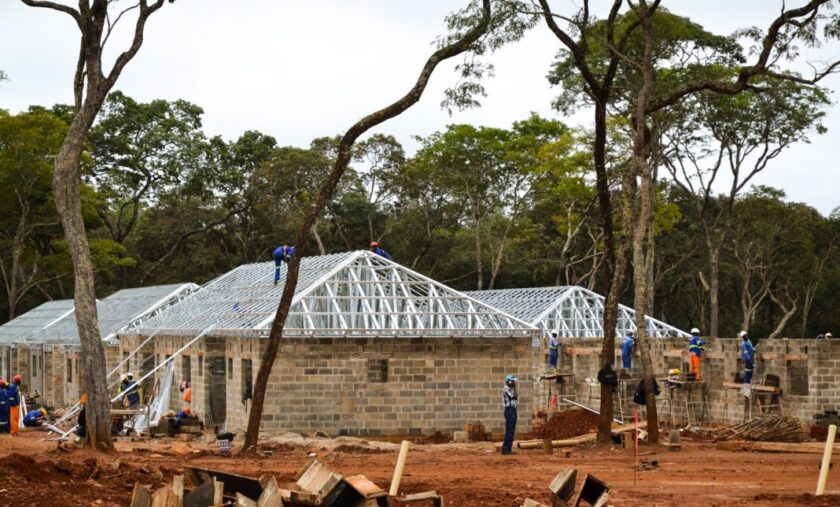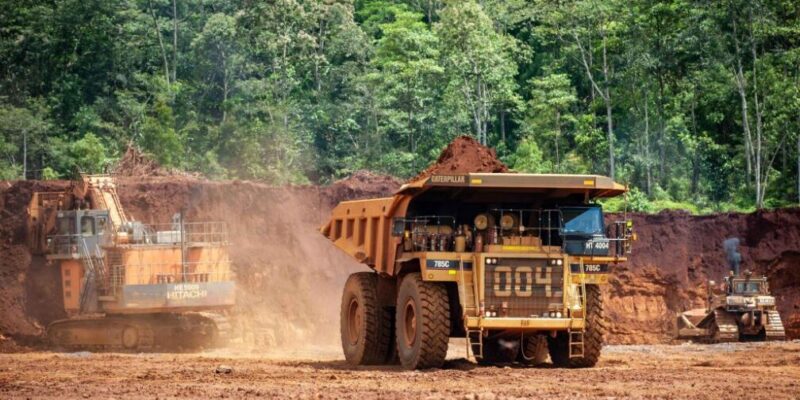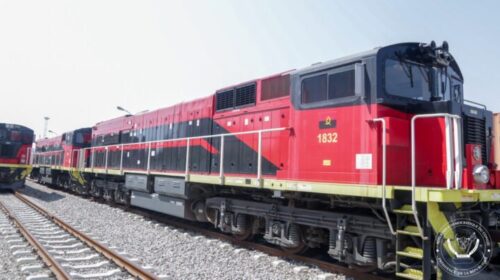Top Reasons for Mining in the Lower Zambezi National Park – CBU Mining Engineering Students
“For as long as we are disconnected from the land economically, preserving it is not a priority.” – Munyumba Mutwale. This statement could not be more consistent with the reality of the matter, especially for a people that are trying to overcome poverty, debt, economic stagnation and underutilization of the abundant resources within the land. What then are we truly “preserving” if preserving and bettering the livelihoods of the people does not come first?
For quite some time now, the issue of mining in the Lower Zambezi National Park has been one that has sparked debates and mixed feelings not only within the nation but amongst a few international observers as well. The aim of this work is to give hindsight over the issue with the prevalence of facts over emotion, to dispel any myths and unfounded concerns from a Mining Engineering perspective and to establish firm reasons why it is justifiable for the mining operation to go ahead. It will therefore be necessary to first get an understanding of a few key terms and background understanding of a few key areas within this topic of discussion.
Mining: The extraction of valuable and economically profitable minerals from the earth’s crust.
Lower Zambezi National Park (LZNP) : A national park laying on the north bank of the Zambezi River in Southeastern Zambia covering a total square area of 4092km², ringed by a larger game management area.
Project Background: The Zambian Government had granted a Mining License to Zambezi Resources Limited, an Australian copper exploration and development company, through its subsidiary, Mwembeshi Resources Limited, to mine 245km² of the Lower Zambezi National Park via open pit mining with its Kangaluwi Copper Mine project. After initial stalling of the project with back and forth court procedures, the project is now set to go ahead. The argument will now be solidified with keen focus on the economic, environmental, social, and legal aspects that support our position.
ECONOMIC ASPECT
Even without 100% state ownership of any mine in the land, the mining industry has for years continued to be the backbone of the Zambian economy. Zambia finds itself endowed with numerous mineral deposits that keep the economy of the country alive and set premise for the economic growth. The economic benefits of mining in the LZNP would far outweigh any current or future projected economic benefits of the area in its current function as a National Park. To put it into context (As per IGC 2019 report), the tourism and travel industry contributes about 7% to the GDP with only 1% of this accredited to wildlife-based tourism with an estimated tax revenue of $39 million only. Additionally, while the tourism and travel industry as a whole employs more people (7.2%), the number of those employed in national parks is minimal and not properly documented, with little to no decent wages, causing the constant staff turnover. In comparison (According to a report by the Extractive Industries Transparency Intiative), mining contributes about 10% to the GDP (10 times more than the wildlife-based tourism) with indirect contributions totaling up to almost half of the GDP, 73% of total exports, 2.4% direct employment with well-remunerated jobs and 27% of government revenue (making it the industry that contributes the most to the overall revenue of the country). Additionally, mining is a powerhouse when it comes to indirect job creation and opportunities through tenders, contracts and so on to local suppliers and businesses. All of this ultimately has a positive impact on the betterment of the lives of Zambians. The profitability of the national park and actual contribution to the economy and ultimately the lives of individuals leaves much to be desired.

What good is tourism if it is seen as a preserve for the elite and wealthy in society and for foreign tourists only? One of the reasons the tourism industry in Zambia has been limping is because local tourism is not promoted. Most facilities are inaccessible and unaffordable for the average Zambian, an impediment to the growth of the industry and a loss of revenue. It is in this regard that it is commendable to opt for a more economically inclusive establishment that will not only provide decent employment opportunities for the locals but also contribute progressively to the economy of the country as well.
Finally, we all saw how the Covid-19 pandemic brought world economies to their knees and exposed just how fragile some industries are, particularly the tourism industry. Any halt in international travel renders the industry unbeneficial, leading to loss of jobs and unproductivity. Mining on the other hand is a necessity that stands the test of time. With the high demand of copper and rise in copper prices ($10K/mt), the Kangaluwi Copper Project could not have come at a better time.
ENVIRONMENTAL ASPECT
Environmental protection is an essential aspect of any undertaking. There is no operation that is exempt from ensuring that the three components (i.e land, air and water) are looked after and protected. Most of the concerns emanating from this project are to do with environmental concerns of the mining activities that would take place in the LZNP, and understandably so. The LZNP is a natural reserve area, hosting one of Africa’s most cherished water bodies, the Zambezi River, and interlinked with other important natural features. It is no secret the the nature of mining, particularly for the kind of mining method in question (surface/open pit mining) causes a lot of environmental disturbance. It is for this reason that mining can not proceed without “Reclamation”. A good reclamation plan that satisfies and meets the demands of competent environmental bodies such as ZEMA is required, one that properly outlines how it will protect the environment and curb the effects of those environmental disturbances through a clearly detailed EIA (Environmental Impact Assessment) and ESIA (Environmental and Social Impact Assessment). A fitting reclamation plan consists of the following but not limited to: (1) Capability of land to support other activities apart from mining, (2) Proposed land use after mining, (3) Detailed description of how post-mining land use will be achieved as well as (4) Green Bond – funds set aside and paid to the government to assure reclamation.

It is important to acknowledge the fact that that only 6% of the 4092km² is set to be mined, this gives a greater likelihood of mining without causing pollution or damage to the protected areas and to achieve reclamation goals comfortably. Additionally, the proposed mining site is placed 40km from the Zambezi River and 35km from the Mana Pools on the Zimbabwean side, there will be no loss of flora or fauna around that area because of the favorable distances. We need to understand that mining and wildlife can safely co-exist – this can be seen from the stocking of wildlife around Kansanshi, Maamba and Kalumbila, which have demonstrated the ability to preserve wildlife and nature. There are a number of mines worldwide that have been established in National Parks (e.g Energy Resources of Australia and Still Water Platinum in the US) so this is not something new, neither should it cause civil unrest. Via the reclamation protocol, it will actually be possible to return the area to a better and more robust National Park with improved road networks after the 25 year+ mine life is exhausted.
Additionally, Zambia has 20 National Parks and 34 Game Management Areas. On top of that 60% of the total land area in Zambia consists of indigenous forests. This abundance of vegetation also provides a hedge against against any emission concerns. It is actually worth noting that Africa as a whole only contributes 3.8% of global emissions, this can be compared to China’s 26% as a single contributer alone! From the above, what we are trying to establish is that we can afford to sacrifice part of the LZNP whilst creating jobs, adding economic benefits and protecting the environment.
SOCIAL ASPECT
For any mining company, corporate social responsibility is something that can not be done without. This is the nature of mining. It has a ripple effect onto other areas and ultimately produces social benefits as well. Mining companies all over Zambia have used their funds to contribute to the development of the nation through the establishment of townships (e.g Kabitaka $100 million housing project, Kalumbila $200 million township etc) , hospitals, sports facilities, schools, scholarship opportunities and local empowerment opportunities among many other things. Just to set the record straight, no National Park in Zambia has contributed socially with even a community school or hospital. The tourism industry lacks the ability to competitively cater for the social needs of the average Zambian.

LEGAL ASPECT
Due to the spread of misinformation and politicking around the issue, it was found extremely necessary to outline the legitimacy of this mining project as well as the granting of a Mining License in an area such as a National Park by stating that this is provided for and within the confines of the Laws of the Republic of Zambia. This is catered for in the Mines and Minerals Development Act No. 11 of 2015 under sub-sections 22 and 52. This is also catered for in The
Zambia Wildlife Act No. 14 of 2015 under sub-sections 16 and 30. A Mining License was granted to the firm in accordance with the law and after a successful appeal on the initial withdrawal and after resubmission of a new EISA assessed by ZEMA, the Mining License has been justifiably and judiciously given therefore the law needs to be respected.
CONCLUSION
At this point it is believed that the purpose of this work has been achieved by setting the record straight within the 4 main outlined areas, clearing any myths and concerns as well as giving a more clear, positive and true image of this mining project that has faced attempts of having its image distorted through misinformation and mere politicking. One of the biggest hindrances to progress and development is simply the lack of accurate information. This puts us in a position where we are unable to make decisions from a place of knowledge and end up seeing progressive campaigns as threats. Mining in the Lower Zambezi National Park should go ahead as this will benefit the locals, the economy and the entire country at large. Additionally, with improved mining technologies in the 21st century it is now possible to conducively interface mining and nature conservation without one having to suffer due to the presence of the other.
Mining is the hallmark of civilization. Development and extraction of our God-given resources is what keeps us evolving. Protection of the environment does not equate to leaving things as they are forever. It may seems like a loss when trees are cut down for the creation of solar plants but that loss is immediately countered by the fact that the solar plant will promote the utilization of green energy. Consequently, for any intentional loss caused by mining, there is a gain. Protecting the environment simply relates to doing things sustainably, no country ever developed from keeping jungles intact.
There is always a better way of approaching things. Zambia is a country with unique challenges that require unique solutions. Perhaps the citizenry could focus on more progressive debates and discussions regarding the profitability of the ore bodies within the mine, how it can be maximized and tailored to benefit Zambians more, the legal framework regarding our tax policies, ownership of mines, demanding guarantees and seeking for improvements. It is simply not good enough to call for the halt of this operation without providing adequate and viable solutions.

REFERENCES
- Zambia | Extractive Industries Transparency Initiative https://eiti.org/Zambia/Mining Industry [Accessed on 09/02/2022]
- Tourism and COVID-19 in Zambia – IGC https://www.theigc.org/blog/tourism-and-covid-19-in-zambia/ [Accessed on 09/02/2022]
- Zambezi Receives Environmental Approval to Develop Kangaluwi Copper Project in Zambia. https://www.azomining.com/News.aspx?newsID=9280 [Accessed on 08/02/2022]
- Ministry of Tourism and Arts (2018) National Parks and Wildlife Policy [PDF]
- Zambezi Resources Limited (2012) Kangaluwi Copper Project [PDF]
- Mines and Mineral Development Act No. 11 of 2015 [PDF] & The Zambia Wildlife Act No. 14 of 2015 [PDF]
The authors are Goodness Mpashi, Musakanya Chitalima, Temwani Katanga Phiri, 3rd Year Mining Engineering Students at The Copperbelt University: School of Mines and Mineral Sciences – B.Eng Mining Engineering – Kitwe, Zambia. 2022
![]()





